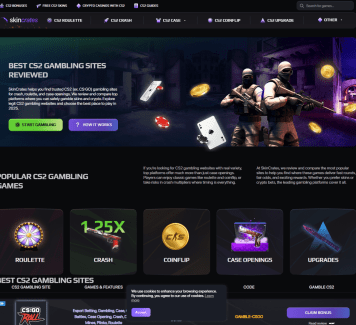
If your business is expanding into international markets, it’s important to understand the consumer buying behavior of your new target market. Understanding their buying preferences and tracking their behavior will help your business to take advantage of these trends. Effective global marketing strategies look for ways to adapt marketing campaigns to connect with new target markets. Relating to and connecting with the consumer habits of your target audience helps maximize your impact in international markets. Without tailoring your marketing campaign to these new regions, your company may struggle to gain a positive foothold.
So, what constitutes an effective global marketing campaign? How can you decipher consumer buying behavior in foreign markets? Let’s explore the different strategies you can implement to understand your new target audience and how your company can adapt these strategies to make your new audience feel like part of the family.
Identify Key Markets
The first step in adapting to global expansion is identifying key markets. Which regions are most suited for your product or service, and where will new audiences be most receptive? Once you’ve identified your key market, you must get to know your audience. Who is your new target audience? What are their interests and preferences? You may have dialed in your understanding of your customers domestically, but this doesn’t always directly translate internationally. Your international audience may differ greatly from your domestic one.
Specific locations can also influence a customer’s buying behavior. Different regions have different cultures, languages, customs, traditions, economies, religions, and social expectations. These differences influence what is important to buyers and how they respond to products, services, and marketing.
For instance, one culture may value rest while another values productivity. Another market may eat beef, while other markets’ religious beliefs prohibit eating beef and promote vegetarianism instead. It’s important to understand these differences so you can tailor marketing campaigns to meet the needs of new audiences. Otherwise, your marketing strategies may fail to reach your audience or, even worse, offend or alienate the very people are trying to connect with. Instead, resonate with your new target audience by learning their preferences, behaviors, and expectations for maximum impact.
Analyze Global Consumer Buying Behavior
How do you identify the preferences of your new target market? By analyzing consumer buying behavior using the strategies listed below:
- Use web analytics to identify demographics. What media does your target audience consume? What devices do they use? What are their professions? Where do they tend to shop? How old are they? What do they have in common?
- Use metrics to identify customer lifetime value, average purchase value, and frequency rate.
- Use qualitative research, such as interviews, to determine why your target audience makes the decision to purchase. Is it spontaneous? Based on research and reviews? Does pricing motivate their decision? These answers will help you understand what selling points appeal to your target audience so you can tailor your marketing campaigns according to these preferences.
- Collect data. This includes industry data, qualitative individual data, and quantitative company data. Behavior analytics and marketing analytics can help you identify trends. If you know which channels and platforms are most commonly used in a region, you have identified the best platforms to place your ads.
- Monitor competition. What is the competition in your key markets? Why do customers choose the competition, and how do they appeal to your audience? Understanding the competition will help you differentiate yourself so you can fill the gap by meeting your customers’ additional needs.
Which tools are available to analyze and understand customer behavior? There are a host of available tools and strategies. Conduct interviews and surveys or hold focus groups; use data from Google Analytics; track online presence through online reviews and social media listening; or run competitive analysis tools. Or work with a data analyst who specializes in finding and interpreting metrics. When you work with a marketing agency specializing in global franchising, you work with experts in data and marketing.
InnoVision Global Marketing leverages its resources and expertise to create custom solutions for navigating international markets.
Consider Cultural Differences
Cultural sensitivity is more than a buzzword. Cultural sensitivity means making the effort to understand the different values and traditions of different regions and bridging the gap by respecting these different norms. To practice cultural sensitivity, your company should tailor marketing campaigns to resonate with your audience’s culture. This means your brand uses appropriate messaging, avoids offensive language or symbols, and localizes its content.
Examples of cultural differences can include belief systems, traditions, moral values, languages, and laws that are held in common by a nation or community. Though there are many ways to practice cultural sensitivity, some of the most common practices include these dos and don’ts:
Don’t
- Use offensive language or symbols: What is benign in one culture may be offensive in another. Make sure to use symbols, colors, and languages that are culturally appropriate and avoid any that have a different or offensive meaning in the context of a different culture.
- Use slang and idioms: Slang, idioms, or colloquialisms are region-specific and do not translate well in different cultures. Your message may be lost in translation, rendering your campaign ineffective.
- Use harmful stereotypes: Your campaign should be inclusive of a broad audience; avoid alienating audiences with harmful stereotypes.
Do
- Localize content: This includes your marketing campaigns and website. Your messaging should align with the values of your new market, and your website should be optimized for local currency and accurate language translations.
- Work with local experts: Partner with local experts in linguistics and cultural nuance for correct translations and valuable insights.
- Work with local influencers to build brand trust: Work with community members who can share your products and their value on a local level.
- Add products or services specific to different regions: Adapt to local tastes by adding different products or goods.
- Include local holidays in promotions: Think beyond holidays that are celebrated worldwide and offer promotions for holidays that are region-specific.
With these tools and strategies, your brand can adapt to international markets and maximize your brand’s impact. Consumer buying behavior is more than analytics: it’s adapting marketing strategies to resonate and connect with your new audience!













